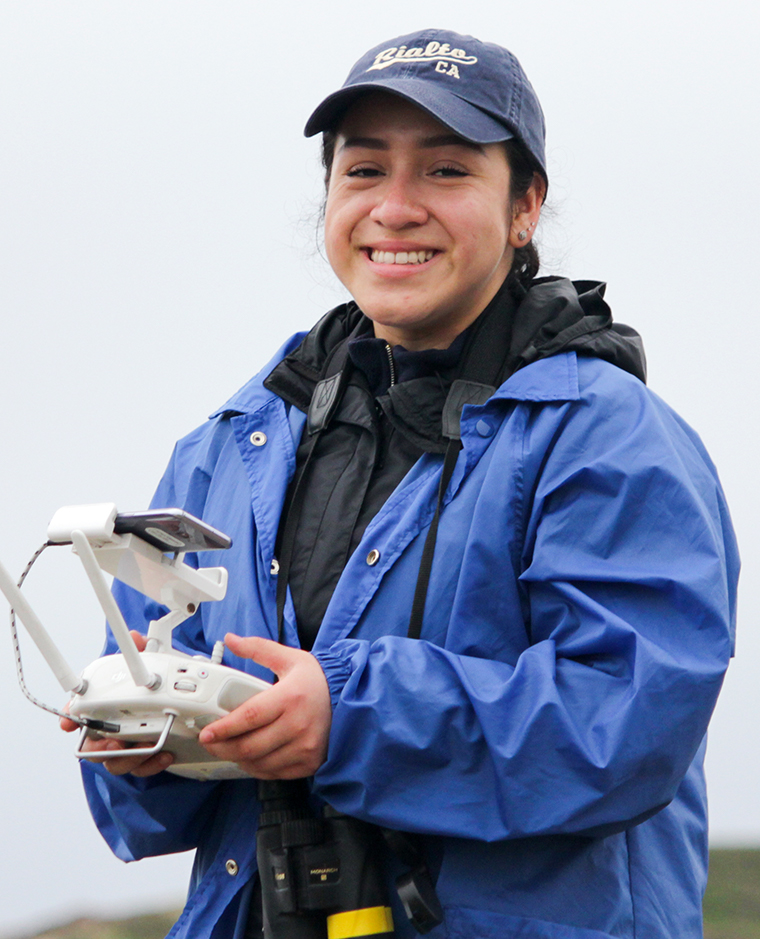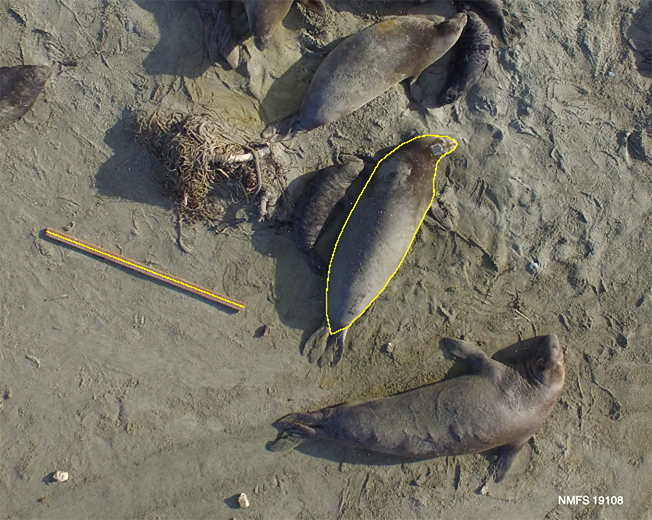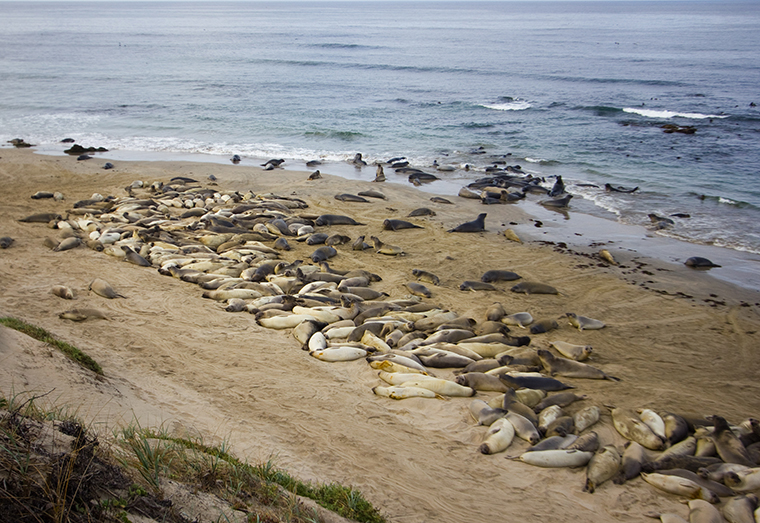By weighing elephant seals, UC Santa Cruz’s Costa Lab learns how successful they have been in their months-long hunting expeditions. It’s also valuable data for protecting the seals and understanding the ocean environment.
But weighing seals is difficult. They can be 10 feet long or more. They have to be sedated. A team of five or six work together to hang each seal in a sling from a portable scale. It’s dangerous and causes significant disturbance to the seal.
Diana Alvarado hopes that by analyzing pictures of the seals taken by a hovering drone, she can get accurate weight estimates. If it works, it would make it much easier and safer to gather this data.
“To be able to be part of that as an undergraduate is an amazing opportunity and truly a privilege,” says Alvarado (Merrill ‘19, marine biology).
During her senior year, Alvarado has made regular visits to the elephant seal rookery on the beach at the Año Nuevo Natural Reserve to collect drone images of seals. Comparing measurements in image analysis software to weight observations gathered by field researchers using the current method, she’s been developing a mathematical formula she hopes will provide reliable estimates.
She began participating in the Costa Lab's research the summer between her junior and senior years. The STEM Diversity Programprovided a salary for an internship. Through that experience, she forged a connection with her advisor, Postdoctoral Researcher Roxanne Beltran, who has mentored her during the drone imaging project.
Scholarships from the Koret Foundation and the Seymour Marine Discovery Centerenabled her to devote additional time to the project. Funds for the drone came from the Packard Endowment in Ocean Science and Technology.
Alvarado is the first in her family to attend university. She says peers in Rialto, where she grew up, wouldn’t consider marine biology as a possible career path.
“I can take that back and tell my family and tell my sisters and they almost don’t believe it,” she says.
Alvarado plans to pursue a career in which she can continue researching marine mammals and introduce other students from underrepresented backgrounds to field research.



